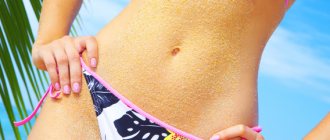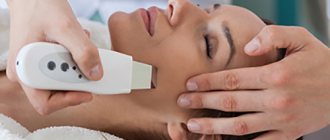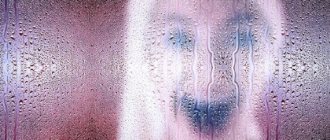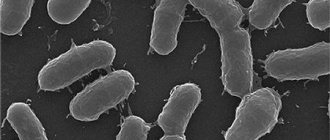Burns and frostbite are fairly common skin injuries. Unfortunately, they are often treated incorrectly by lubricating the burns with oil or applying ice to frostbitten areas.
It should be remembered that a person who has suffered skin lesions needs to provide first aid as quickly as possible. Sometimes not only his health, but also his life depends on this. The main thing in treating burns and frostbite is not only to reduce pain, but also to save the affected tissue from further destruction.
1
Treatment of burns
2 First aid for burns
3 First aid for burns
Burns
A burn is tissue damage caused by high temperatures. The nature of treatment for burns depends on the size of the affected area, the type and degree of the burn.
According to the World Health Organization, 265 thousand people die from burns every year in the world.
Classification of burns:
Based on the method of injury, the following types of burns are distinguished:
- thermal (tissue damage under the influence of high temperatures), most often sunburn;
- electrical (occurs under the influence of electric current or electric arc);
- chemical burns (damage resulting from contact with the skin of alkalis, acids and caustic salts);
- radial.
In some cases, the skin can be damaged even by seemingly harmless weeds. If hogweed juice comes into contact with the skin and subsequent exposure to the sun, a severe burn with the formation of blisters is possible. Even if you are burned by hogweed a week ago, you must cover your skin when in the sun.
Burns by area affected
The area of the burn can be determined using the “palm” rule (the surface is about 1% of the total surface of the skin).
They also use the measurement according to the rule of nines: of the total surface area of the body, the surface of the head and neck is 9%, the upper limb - 9%, the lower - 18%, the anterior surface of the body - 18%, the posterior - 18%, the perineum and genital organs - 1%.
If the burn area occupies more than 15%, burn disease develops.
1 Treatment of burns
2 First aid for burns
3 First aid for burns
Degrees of burns
In international practice, there are 4 degrees of burns:
- 1st degree burn : superficial redness of the skin, accompanied by pain and swelling, after 3-5 days the symptoms disappear, slight peeling remains on the skin.
- 2nd degree burn : pain, severe redness of the skin, watery-serous blisters. Possible tissue suppuration. Healing occurs more slowly than with 1st degree burns.
- 3rd degree burn : necrosis of all layers of the skin occurs, scabs (a rough film of gray-brown color) appear on the surface of the burns. The wound becomes infected, suppurates, tissue rejection may occur, and scars form after burns.
- 4th degree burn - the most severe damage, regardless of the area affected. Not only tendons and skin, but even bones are affected by high temperatures.
With deep or extensive tissue damage, burn disease may develop, for which hospitalization is indicated.
In order not to worsen the victim’s condition and not to complicate the doctor’s work, it is very important to know the rules of first aid for burns.
Under no circumstances should you pour oil or fat onto burnt skin, pierce blisters on it, or try to remove melted clothing from a person. This can lead to further wound infection and tissue damage.
Only a doctor can choose the optimal methods for treating burns, taking into account the severity of the injury and the patient’s condition.
Classification of burns
The severity of the injury is determined by the depth of damage to the skin. To provide effective assistance, it is necessary to correctly classify the burn:
- I degree. Slight redness of the skin area, swelling, mild pain. The consequences disappear without a trace after 3–7 days.
- II degree. Severe pain associated with the appearance of watery blisters. The deep layers of the skin are not damaged, which eliminates the formation of scars. Characterized by a change in skin color that occurs over time.
- III degree. The symptoms are many times greater than those listed above. Tissue death occurs and scabs and open wounds appear. The skin recovers poorly, forming dense scars.
- IV degree - charring. It is considered the most difficult to cure. In most cases, skin grafting is required. The injury affects the tissues of the muscles, tendons and bones.
In domestic conditions, first and second degree burns more often occur, but it is important to note that incorrectly provided or untimely assistance can lead to infection of the damaged area and serious consequences even with a second degree burn. If you are injured, it is important to see a doctor as soon as possible.
First aid for burns
First aid for burns consists of eliminating the negative factor: you need to move away the source of electric current, wash off the chemical, cover the body from the sun, etc.
You can reduce the pain from a burn by using cold water or an ice pack, this will help reduce the severity of the damage. Apply a dry, sterile dressing, such as a bandage or clean cotton cloth, to the affected surface.
Treatment of burns
A traumatologist will treat the affected area.
For example, a wound resulting from a chemical burn is treated with a neutralizing substance (if the burn was caused by lime, then glucose is used).
Next, the doctor removes part of the non-viable skin and adhered fragments of clothing from the wound, removes blisters, and applies a dry sterile bandage or ointment mesh bandage to the wound. When treating burns, painkillers, a course of antibiotics, and a tetanus shot are prescribed.
Types of oral burns
A burn is a very common injury. Along with the oral cavity, the larynx and esophagus may be affected. There are four main forms of burns:
- Thermal burn. Occurs through contact of the oral cavity with hot liquid or steam.
- Electrical injury. The most common case of such an injury is a violation of the rules for conducting physiotherapeutic procedures.
- Chemical burn. This injury occurs as a result of contact of the oral mucosa with acids, alkalis or chlorine.
- Radiation burn. You can get such a burn during radiation therapy in the complex treatment of malignant neoplasms of the larynx.
Frostbite
Frostbite is damage to the skin under the influence of low temperatures, both from local freezing and from general hypothermia of the body. Low temperatures impair metabolism in cells and lead to their death.
1 Treatment of frostbite
2 First aid for frostbite
3 First aid for frostbite
Nature and degree of frostbite
A person can get frostbite in different situations:
- frostbite of the cheeks, nose, ears, fingers and toes in frosty weather;
- wearing tight and wet shoes at sub-zero temperatures;
- hypothermia of the body as a result of prolonged exposure to water or snow;
- prolonged exposure to the cold while intoxicated.
Watch for the following signs of frostbite. At first, a person will feel cold, then a burning sensation, first the skin turns red, and then turns white. Skin sensitivity is impaired and numbness occurs. Usually a hypothermic person does not feel his condition, and this makes diagnosis difficult.
Degrees of frostbite
Just like with burns, frostbite is divided into 4 degrees.
- 1st degree of frostbite : redness and numbness of the skin area and loss of sensitivity of the affected area of the skin, burning and itching occur. When warmed and rubbed, frostbitten skin begins to turn red. Stage 1 frostbite goes away within a week.
- Stage 2 frostbite is characterized by deeper damage to the layers of the skin and the appearance of blisters with clear liquid on the skin.
- 3rd degree of frostbite : tissue necrosis appears, healing takes place within a month with the formation of scars.
- 4th degree frostbite : not only the skin is affected, but also the bones and joints. The affected tissues are bluish in color and blisters appear.
What are the dangers of deep skin burns?
Minor and superficial burns from heat exposure have little potential danger. Typically, the risks are associated not with the injury itself, but with improper care, during which the wound can become infected.
With a large area of damage, the danger is:
- shock – due to loss of plasma, the blood thickens, making it difficult for the kidneys, heart, lungs and other organs to function;
- toxemia – due to the destruction of cells, dangerous toxins enter the blood.
Toxemia does not occur immediately, but only a week after the injury, which causes problems with the timely access of the patient to a doctor.
Complications can be prevented by immediately contacting a surgeon or traumatologist.
What to do if your skin peels off after sunbathing
Above, we examined the reasons that led to the fact that the skin began to peel off. They also demonstrated that flaky skin after sunbathing
This is essentially a sunburn. However, peeling is often not the most unpleasant symptom of a sunburn!
Often this causes serious discomfort and pain even at the slightest touch to the damaged areas of the skin.
. There may be an increase in body temperature, as well as such unpleasant symptoms as nausea, loss of energy, dizziness and even vomiting.
Attention!
In case of severe sunburn, accompanied by some of the symptoms listed above (or all at once), it is imperative to
seek medical help!
If the side effect of tanning is only simple drying of the skin, which begins to peel off after a few hours or even days, then you can cope with the consequences yourself
. But it is IMPOSSIBLE to reverse this process! Therefore, we can only try to speed up exfoliation in a certain way or make it less noticeable.
Is it possible to peel your skin after sunbathing?
It will not be a revelation to the vast majority that many get some satisfaction from helping the skin peel off. You can also find publications on the Internet where forced peeling of the skin
, but various means are even recommended to help, such as scrubs, pumice stones or chemical peels.
Obviously, many users confuse the stages when the effects of overdrying have practically passed, and the dead layer of the epidermis does not hang in clumps from the body. In fact, skinning
or using various types of scrubbing is fraught with unpleasant consequences for the skin, so this is often not possible.
© arenacreative/Getty Images
Why is it dangerous to peel off your skin after sunbathing?
If you vigorously help the skin exfoliate, there is a risk of catching, so to speak, the junction of the dead layer of the epidermis
with the living. In this case, this connection point can be quite strong.
In other words, by pulling on a layer of dead skin, you risk literally tearing off some area of living skin! Skin damage occurs
through which infection can enter the body. As a result, suppuration may begin.
Also, avoid scratching itchy skin. The fact is that a fresh layer of skin forms on the body (instead of flaking)
not very strong yet. It can be easily damaged by nails, which can lead to the same consequences as just described above.
Does this mean that any peelings cannot be used? And what should you do first?
Stop sunbathing
First of all, you need to stop sunbathing. All! Forget about sunbathing for a while until your body renews its skin.
. And after this, the new layer of skin should be exposed to ultraviolet rays in extremely measured doses.
From this day on, you need to go outside wearing clothes that cover your burned shoulders, back, arms or legs. If your face is burned
, then you should go out into the sun in a wide-brimmed hat and mandatory sunglasses with an appropriate degree of protection from ultraviolet radiation.
What to do if the skin peels off after a burn: first aid
Before starting treatment, you need to make sure that high temperatures or chemicals are no longer negatively affecting the skin. To do this, you need to remove clothing from the damaged part of the body and thoroughly rinse the wound with cold running water. If there is no water, then apply ice or snow.
If the area is very large or the degree of the burn is so severe that the victim cannot provide first aid to himself, you need to call an ambulance, wash the wound and wrap him in a clean cloth.
For minor wounds, you can give yourself first aid yourself.
- After washing the wound, you need to treat it with products that are designed to regenerate the skin. Olazol, Furaplast, and Panthenol, which is available in spray form, are well suited.
- With a severe burn, the skin peels off and a wound appears, which can become infected. Therefore, you need to apply a sterile bandage. Gel wipes should be placed under it to help restore the skin: GelePran, LitA-Tsvet-1. The dressing should be changed depending on the duration of action of the napkin: from 1 to 2.5 days.
- If there are no special preparations at hand, you need to treat the wound with any antiseptic that does not contain ethyl alcohol. Miramistin, a solution of furatsilin or potassium permanganate are suitable.
- In case of pain, you need to take a painkiller, for example, Analgin, Ketanov, Paracetamol.
After proper treatment of the wound, the affected skin begins to gradually recover. If your general health worsens, you should definitely consult a doctor.










